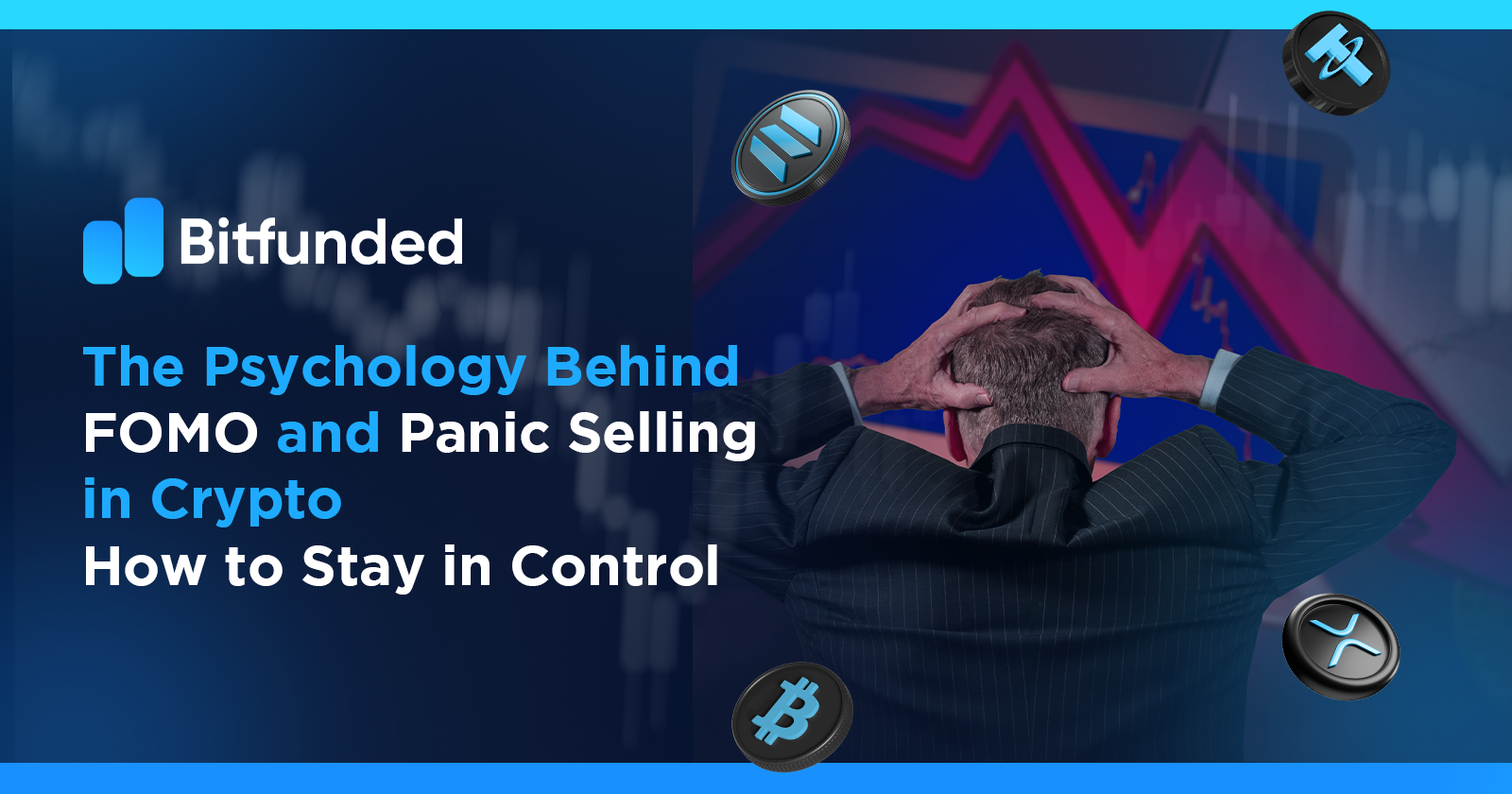Because of its dramatic price movements cryptocurrency markets are well known for both unexpected market pumps and serious collapses. Trading volatility causes a significant number of traders to succumb to FOMO (Fear of Missing Out) together with panic selling which subsequently produces decisions based on emotions and moneyake losses.
Success in crypto trading requires more than knowledge of technical analysis and market trend monitoring because what truly matters is your ability to control psychological trading effects. The following guide details the breakdown of each separate point.
What is FOMO in Crypto Trading?
FOMO, or Fear of Missing Out, is a psychological reaction where traders feel pressured to buy an asset because they fear missing a potentially huge opportunity. It is one of the most common emotional responses in crypto trading, often leading to impulsive and irrational buying decisions.
Example of FOMO in Action:
- You see Bitcoin (BTC) rapidly surging from $40,000 to $50,000 within a short time.
- Social media and crypto influencers are hyping it up, saying it will hit $100,000 soon.
- You fear missing the next big rally, so you buy at the peak—only for BTC to drop to $42,000 shortly after.
Psychological Triggers Behind FOMO:
✔ Social Proof: Seeing others profit makes traders believe they are missing out.
✔ Herd Mentality: When everyone is buying, traders feel the need to follow the crowd.
✔ Regret Aversion: Traders fear regretting not taking action if prices keep rising.
✔ Media & Hype: Crypto news, Twitter trends, and influencer endorsements amplify FOMO.
The Danger of FOMO: Buying into hype often results in purchasing at the highest price, leading to potential losses when the market corrects.
What is Panic Selling in Crypto?
Panic selling occurs when traders sell their assets in a state of fear, usually due to a sharp market decline or negative news. Instead of making rational, calculated decisions, traders act out of fear of further losses, often selling at a significant loss.
- You bought Ethereum (ETH) at $3,500, expecting it to go higher.
- Suddenly, the market crashes, and ETH drops to $2,800.
- Fear sets in as you believe ETH will fall even further, so you sell at a loss—only for the price to recover to $3,200 shortly after.
Psychological Triggers Behind Panic Selling:
✔ Loss Aversion: People feel the pain of losses more intensely than the joy of gains.
✔ Recency Bias: Traders focus only on the most recent price movements, assuming the trend will continue downward.
✔ Media-Induced Fear: Negative news or FUD (Fear, Uncertainty, Doubt) spreads quickly, fueling panic.
✔ Lack of Risk Management: Without a plan, traders react emotionally instead of strategically.
💡 The Danger of Panic Selling: Selling in a state of fear often results in locking in losses, even when the market eventually recovers.
How FOMO and Panic Selling Hurt Your Trading Performance
Both FOMO and panic selling lead to poor decision-making and inconsistency, which can have long-term consequences:
🚨 Buying High, Selling Low: A classic mistake where traders buy assets at peak prices due to FOMO and then sell them at lower prices due to panic.
🚨 Increased Stress & Anxiety: Emotional trading causes mental fatigue, leading to irrational trades and burnout.
🚨 Lack of Strategy: Traders make impulse decisions based on emotions instead of following a structured plan.
🚨 Capital Loss & Missed Opportunities: Overreacting to market swings results in losses and lost profit opportunities when the market rebounds.
How to Overcome FOMO and Panic Selling in Crypto
Overcoming FOMO and panic selling in crypto requires a disciplined approach to trading. Having a predefined trading plan helps remove emotions from decision-making by setting clear entry and exit points based on analysis rather than impulses. Risk management strategies, such as position sizing and stop-loss levels, ensure controlled exposure to losses, while profit-taking strategies secure gains systematically. Automating trades with stop-loss and take-profit orders further reduces emotional interference, protecting investments from excessive losses or greed-driven decisions. Instead of constantly monitoring price fluctuations, which fuels anxiety and impulsive actions, traders should set price alerts and focus on long-term trends. Avoiding social media hype and fear-driven narratives prevents unnecessary stress and encourages a rational mindset when navigating market volatility.
A well-diversified portfolio minimizes risk by balancing stable assets like Bitcoin and Ethereum with altcoins that have strong fundamentals and stablecoins for liquidity. Relying on a single asset, no matter how hyped, increases exposure to sudden market shifts. Educating oneself on market cycles, technical analysis, and trading psychology helps reinforce logical decision-making, while keeping a trading journal allows traders to learn from past mistakes. Professional traders maintain emotional control, avoid chasing hype, and view market downturns as opportunities rather than threats. A disciplined, data-driven approach combined with the understanding that dips are a natural part of the crypto market helps traders stay patient and resilient. Ultimately, adopting a long-term perspective and only investing what one can afford to lose ensures a more stable and confident trading experience.
Master Your Emotions, Master the Market
Emotional trading is one of the biggest hurdles crypto traders face. FOMO leads to buying at unsustainable highs, while panic selling causes unnecessary losses during temporary market dips.
To succeed in crypto trading, mastering emotions is essential. Sticking to a structured trading plan helps eliminate impulsive decisions by providing clear entry and exit strategies.

